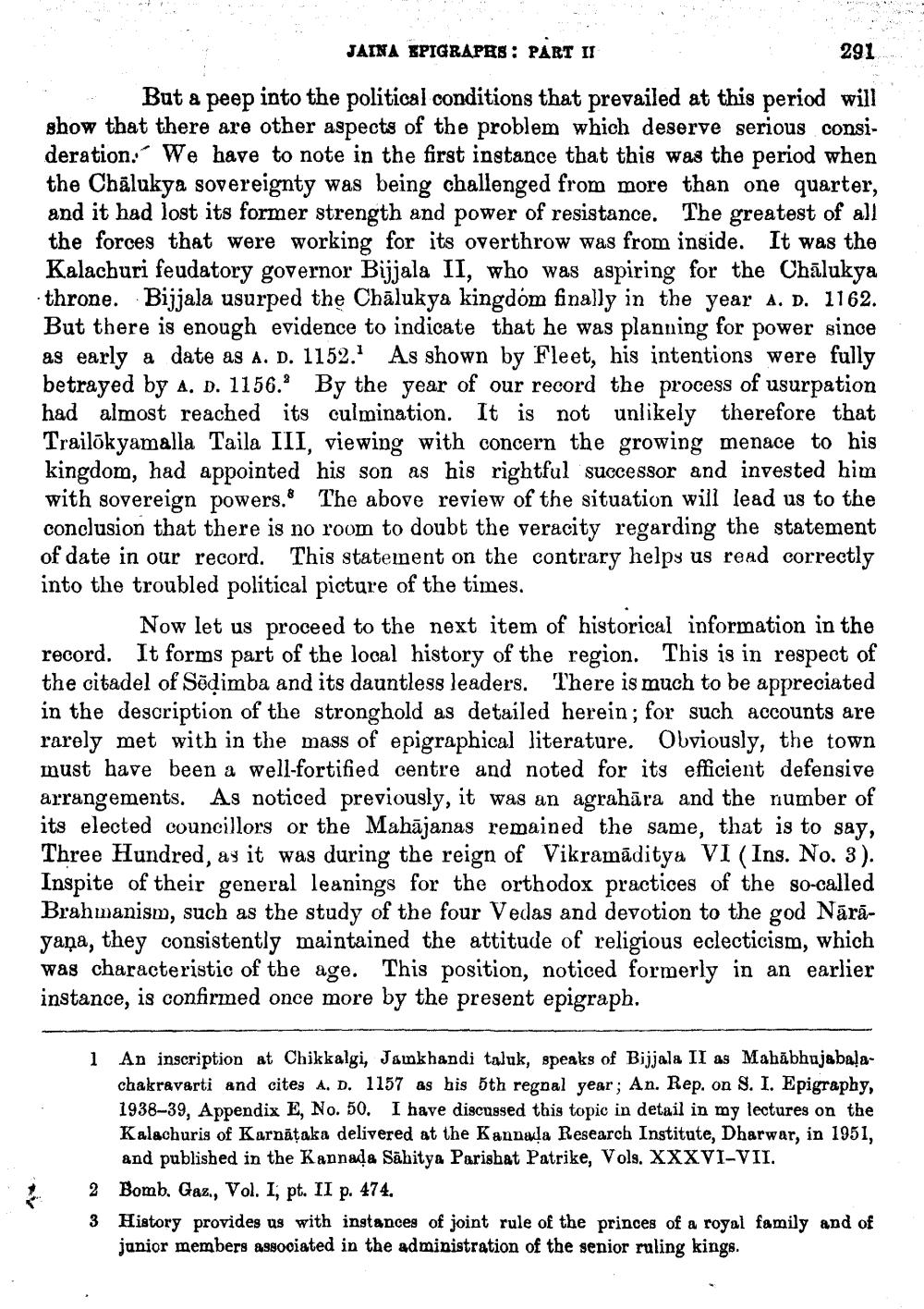________________
291
JAINA EPIGRAPRS : PART II But a peep into the political conditions that prevailed at this period will show that there are other aspects of the problem which deserve serious consideration. We have to note in the first instance that this was the period when the Chālukya sovereignty was being challenged from more than one quarter, and it had lost its former strength and power of resistance. The greatest of all the forces that were working for its overthrow was from inside. It was the Kalacburi feudatory governor Bijjala II, who was aspiring for the Chālukya · throne. Bijjala usurped the Chālukya kingdom finally in the year a. D. 1162. But there is enough evidence to indicate that he was planning for power since as early a date as a. D. 1152. As shown by Fleet, his intentions were fully betrayed by A. D. 1156. By the year of our record the process of usurpation had almost reached its culmination. It is not unlikely therefore that Trailõkyamalla Taila III, viewing with concern the growing menace to his kingdom, had appointed his son as his rightful successor and invested him with sovereign powers. The above review of the situation will lead us to the conclusion that there is no room to doubt the veracity regarding the statement of date in our record. This statement on the contrary helps us read correctly into the troubled political picture of the times.
Now let us proceed to the next item of historical information in the record. It forms part of the local history of the region. This is in respect of the citadel of Sõdimba and its dauntless leaders. There is much to be appreciated in the description of the stronghold as detailed herein; for such accounts are rarely met with in the mass of epigraphical literature. Obviously, the town must have been a well-fortified centre and noted for its efficient defensive arrangements. As noticed previously, it was an agrahāra and the number of its elected councillors or the Mahājanas remained the same, that is to say, Three Hundred, as it was during the reign of Vikramāditya VI (Ins. No. 3). Inspite of their general leanings for the orthodox practices of the so-called Brahmanism, such as the study of the four Vedas and devotion to the god Nārāyaņa, they consistently maintained the attitude of religious eclecticism, which was characteristic of the age. This position, noticed formerly in an earlier instance, is confirmed once more by the present epigraph.
1 An inscription at Chikkalgi, Jamkhandi taluk, speaks of Bijjala II as Mahābhujabala
chakravarti and cites A. D. 1157 as his 5th regnal year; An. Rep. on 8. I. Epigraphy, 1938-39, Appendix E, No. 50. I have discussed this topic in detail in my lectures on the Kalachuris of Karnataka delivered at the Kannada Research Institute, Dharwar, in 1951,
and published in the Kannada Sahitya Parishat Patrike, Vols. XXXVI-VII. 2 Bomb. Gaz, Vol. I, pt. II p. 474. 3 History provides us with instances of joint rule of the princes of a royal family and of
junior members associated in the administration of the senior ruling kings.




